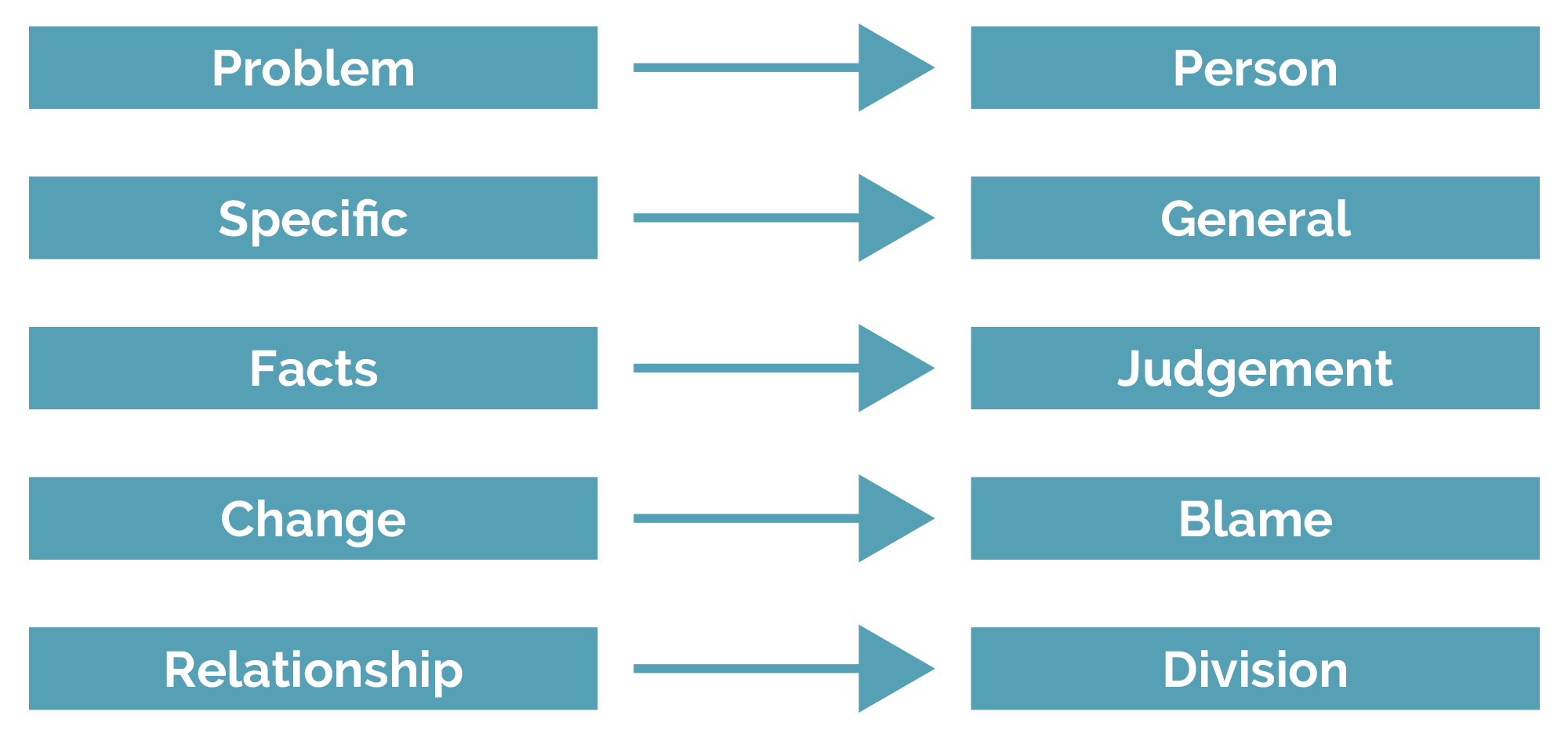Challenging conversations in the workplace
Are you putting off a challenging conversation with a colleague? Don’t worry, you’re not alone with this dilemma. One of the toughest parts of being a leader and manager — or even a parent, friend or partner — is finding the courage to initiate difficult discussions. Whether you need to tackle gaps in performance, confront inappropriate behaviour with some tough feedback, or resolve conflict between team members — challenging can be a very uncomfortable business indeed.
Why do we avoid difficult conversations?
- You fear being disliked. No matter how much you prepare, you can never predict how a conversation will go or how another person will react. Fear of resentment, retaliation or things getting personal often stops us from broaching difficult subjects with others.
- You avoid confrontation. Lots of us are conflict-avoiders – for good evolutionary reason! Even if you understand rationally that the only way through a problem is via a challenging conversation, an instinctive fear of confrontation might prevent you from doing it.
- You’re partly to blame. Having to face up to your part in a problem can feel like an admission of failure. This could be a nagging sense of guilt that something has happened on your watch, that you neglected to give timely feedback about a problem, or that you failed to establish clear performance standards in the first place. These doubts can be hard to shift and can prevent us from discussing issues openly.
- You’re afraid of looking foolish. What if you start the conversation but then don’t know how to continue it? We have all been in situations where confronting someone with the problem has only made it worse, leaving us feeling embarrassed and vulnerable.
- You’re not sure whether you’re the right person for the job. Challenging poor performance is usually initiated by a manager, but situations aren't always so clear-cut, especially in workplaces that encourage leadership and decision-making at all levels. When challenging across or upwards, things can feel ambiguous. Do you have permission to start the conversation? What’s the likelihood of you getting out of your depth?
So how can we move past these anxieties? In the first instance, prevention is always better than the cure – here are some handy tips for getting it right in the first place…
Preventing the need for challenging conversations:
- Establish clear performance expectations. If you’re going to hold someone to account for underperformance, it’s important to establish clear performance standards upfront and make them clear to all involved.
- Give constructive feedback in a timely manner. The best feedback is specific, timely and change-orientated. Providing feedback as near to the moment as possible gives people the best chance of changing their performance to meet your expectations.
- Praise where praise is due. This isn’t about delivering a ‘s**t sandwich’; it’s about making sure that you acknowledge achievement as well as to challenging underperformance. Giving praise helps to build recognition and good working relationships, and what’s more, if someone feels unappreciated, it’s unlikely they will react well to any negative feedback or challenge from you.
- Don’t wait for formal appraisals. Encourage a culture of everyday feedback, coaching and challenging, and try to cultivate a collegial, collaborative attitude that says, ‘we’re in this together’, rather than, ‘you work for me’. Consider equipping your colleagues with the knowledge and skills to hold these quality conversations themselves. As leaders, our job is to develop talent for the long-term and these conversations should happen all year round.
Sadly, it’s not always possible to avoid issues arising, so here’s how to make addressing them easier…
How to have challenging conversations
- Be prepared. Do your homework and ensure you fully understand the issue at hand. When outlining the performance gaps, have specific examples and facts to hand.
- Minimise the negative reaction. When describing the issue, be specific and objective, clearly outlining the effect it is having on the business. Clarify that the conversation is intended to be helpful and emphasise your willingness to support, ending with a statement inviting change or offering alternatives.
Don't get personal. Remember that challenging is not the same as criticising; you are challenging the performance, not the person. So make sure you stay on track, structure the conversation around the issue, and be ready for any reactions you might provoke.

- Listen and respond, don’t react. Listen carefully and objectively to the person you are challenging and make sure to control your emotions. Reflect on what you are hearing from them – it will help you to better understand their reality and reach a solution.
Recognise when the other party accepts responsibility. Resilience and persistence are useful but it’s important that you can also recognise acceptance by the other party. When challenging, you ‘own’ the problem and your aim is to transfer this responsibility to the other party. Once they acknowledge that a performance gap exists, they become the person who wants to do something about it. At this point, the conversation can become a coaching session.
Learn more about conversations that matter
Explore our leadership playbook
